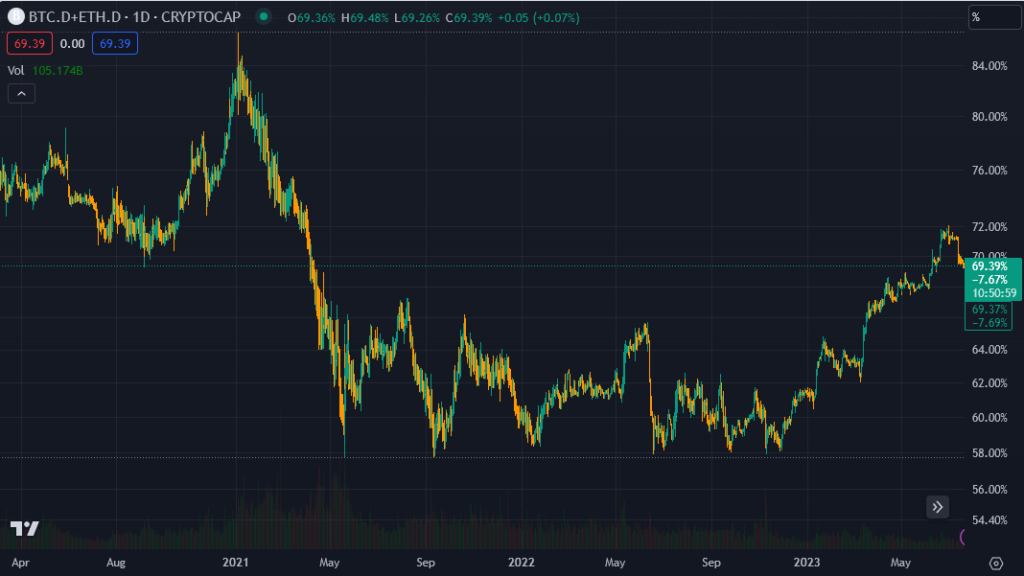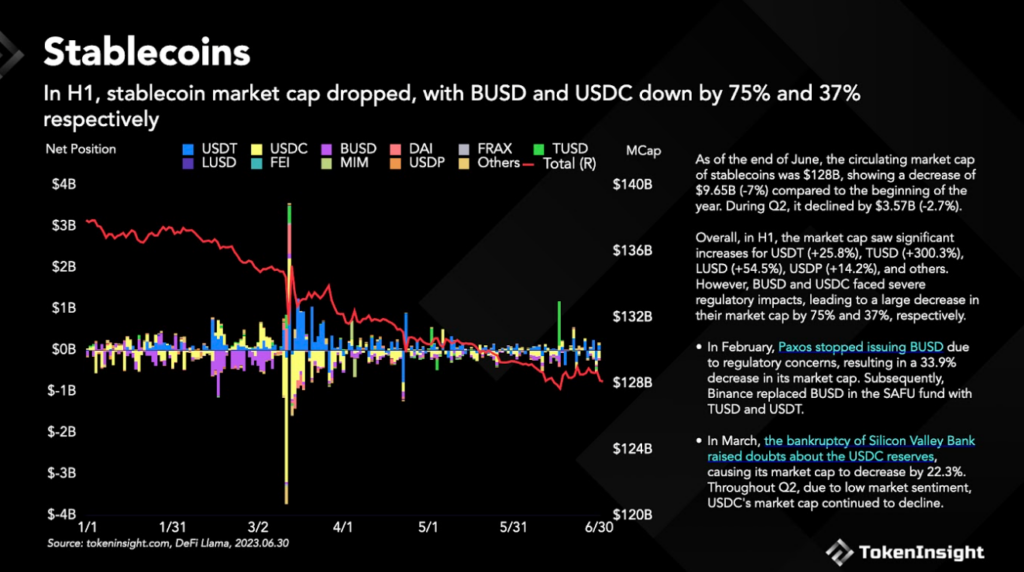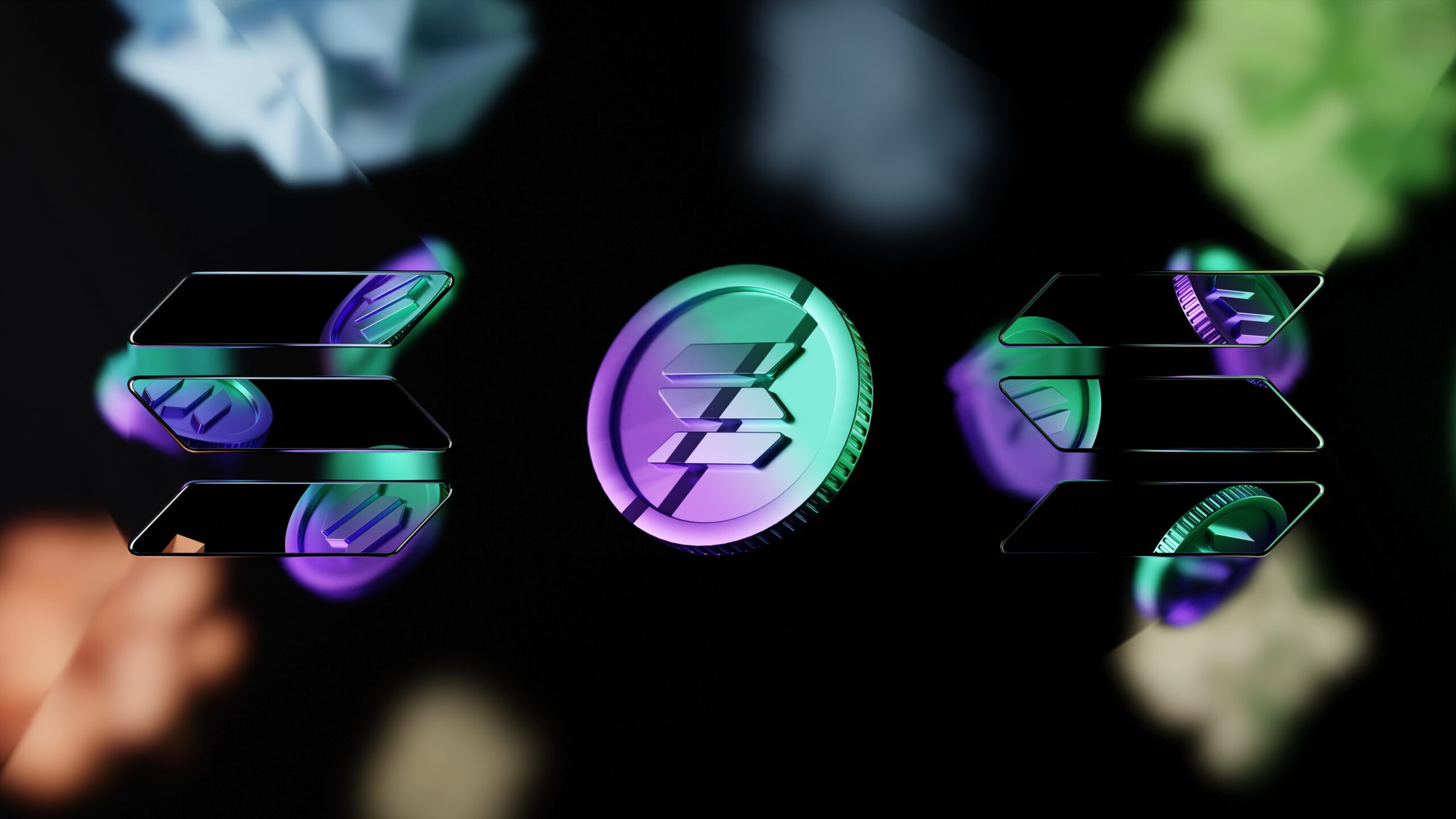During a relatively stable second quarter, Bitcoin and Ethereum have expanded their shares to over 70% of the total cryptocurrency market capitalization for the first time since April 2021

During the same period, the recently released Crypto Market Insights Report 2023Q2 by TokenInsight indicates the crypto market saw a decrease in the total market capitalization of stablecoins.

According to the report, the stablecoin market cap declined by 7% in the first half of 2023 to $128 billion as of the end of June.
A CryptoSlate analysis of the combined BTC and ETH dominance charts shows they rose a combined 12%, which implies that factors other than a shift from stablecoins have contributed to the increased dominance of Bitcoin and Ethereum.
The TokenInsight report highlights regulatory actions against two major stablecoins, USD Coin (USDC) and Binance USD (BUSD), as drivers of the downward trend for stablecoins. Following the bankruptcy of one of its reserve banks, USDC’s market cap dropped 22.3% in March. Meanwhile, the issuance of BUSD was halted, leading to a 75% decrease in its market cap.
Ethereum Staking Surges Post Shapella Upgrade
Further, the report notes the Ethereum Shapella upgrade in Q2 has proven to be a catalyst for increased staking, showing an uptick from 15% to nearly 20%.
This change has resulted in a sharp rise in staked Ethereum, reaching 23.54M ETH by the end of June, up 48.4%.
Maintaining its dominant position, Lido saw its staked ETH increase by 32.6% to 7.5M ETH, demonstrating the market’s increasing faith in Ethereum’s vision and the prospect of earning passive income through staking.
LSDFi Market and Layer-2 Networks Exhibit Growth
Breaking down the data further, we find that the LSDFi (Liquidity Staked DeFi) market saw an eight-fold surge in its total value locked (TVL), with Lybra Finance emerging as the largest LSDFi pool.
This rapid growth in the LSDFi market signifies the increasing integration of DeFi protocols with LSD, underlining the expanding scope and impact of DeFi in the crypto sphere.
Layer-2 networks also demonstrated an impressive growth trajectory. Notably, zkSync, the first ZK-Rollup Layer-2 network, witnessed an 861.89% increase in its TVL.
This suggests the increasing adoption and development of Layer-2 solutions as the Ethereum community seeks scalable, secure, and efficient transaction processing paths.
Bitcoin’s NFT and Transaction Spike
While Ethereum has been making strides, Bitcoin saw a significant uptick in daily average transactions in May, tripling since the start of the year. The surge can partially be attributed to the rise of Bitcoin Ordinals like NFTs, which caused a spike in transactions and fees.
The growth in Ethereum staking, the surge in LSDFi, and the development of Layer-2 networks are pivotal shifts that could shape the future trajectory of the crypto market. The full TokenInsight report is available to download from its website.
The post Stablecoin decline as ETH staking, Layer-2s see major growth in Q2 2023 appeared first on CryptoSlate.







